Mundt & Associates: The Future is Small and Ambitions are Big
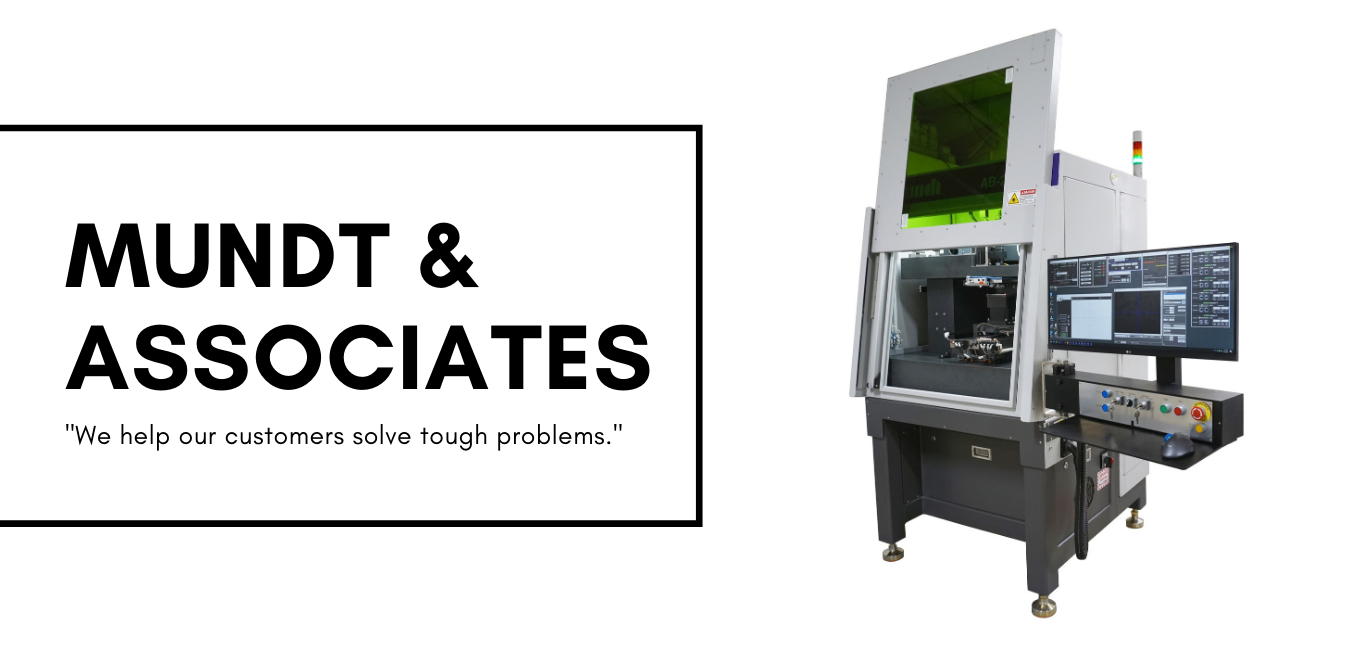
“We never want to compete in the commodified solutions marketplace,” says Ron Mundt. “Instead, we want to compete in the higher-value market. And above all, we want to help our customers solve tough problems.”
Ron Mundt is the president of Mundt & Associates, a specialty OEM manufacturer of high-precision laser workstations based in Scottsdale, Arizona that sells all over the world. Besides extreme accuracy, Mundt’s laser workstations have developed a reputation for improving productivity by combining ease of use with a comprehensive toolbox of features.
“Mundt provides laser workstations to manufacture the highly complex parts typically required by the implantable medical devices market, aerospace, and automotive and electronics industries,” says Mundt. “As they say, the world is getting smaller, and Mundt’s laser workstations are leading the way.”
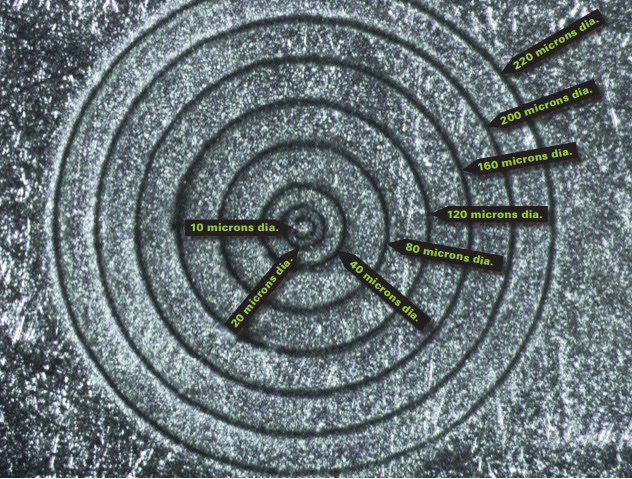
Mundt’s automation laser workstations typically weld metal parts and other materials from 100 µm to 1 m, and precision-cut metals and other materials from 30 µm to 1 m and a depth up to 5 mm, and utilize machine vision to inspect exceedingly small parts of less than 1 mm.
“Our machines can also lap-weld 0.008-inch O.D. stainless tubing and full penetration butt weld of 0.22-inch wall tubing with the same machine and laser,” says Mundt.
Mundt’s laser workstations can also perform metal ablation for high-precision controlled-fracture devices using ultrashort femtosecond laser pulses, which until recently was a “solution in search of a problem,” according to Mundt.
“About ten years ago, in order to achieve an ultrashort, femtosecond laser pulse, you would need to use a large and very impractical custom tool that would cost about $2 million,” says Mundt. “Now it costs maybe $200,000 for a box that’s 18 inches long, 14 inches wide and six inches deep.”
This precision, combined with affordability of femtosecond lasers offered by Mundt opens up new opportunities for manufacturers to incorporate micro electrical mechanical devices (MEMS) and offer a new generation of products, such as medical devices.
“Thanks to ultrashort-pulse laser technology, medical device manufacturers are designing miniaturized pacemakers, for example, that can be installed discretely right inside the human heart,” says Mundt.
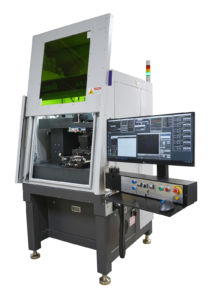
However, while ultrashort-pulse lasers have become affordable to work with over the past few years, a common problem that adds time and cost for manufacturers is positioning and field of view.
“Using conventional controllers with ultrashort-pulse lasers, the field of view must be reconfigured multiple times,” says Mundt. “With most laser workstations, you have to ‘tile’ different areas, connecting one tile to the next. This is an extremely slow, time-consuming process that considerably impacts efficiency and profitably, especially at scale, during the manufacturing process.”
Mundt has a solution that entirely omits tiling with ultrashort-pulse laser workstations.
“To compete in the MEMS marketplace, we needed to find a control system that dramatically improves speed and accuracy of ultrashort-pulse laser workstations,” says Mundt. “Infinite Field of View, or IFOV, is one solution in our workstation controller’s very comprehensive toolbox.”
IFOV, provided as part of Polaris Motion’s controller solution, is an advanced technique that coordinates the motion of a laser Galvo scanner and a motorized stage. It is easy to set up, as there is only one parameter to select. A slider allows the user to choose how much effort is executed by the scanner and how much is executed by the stage.
By using IFOV, says Mundt, it’s possible to manufacture a large, detailed and complex part with extreme speed.
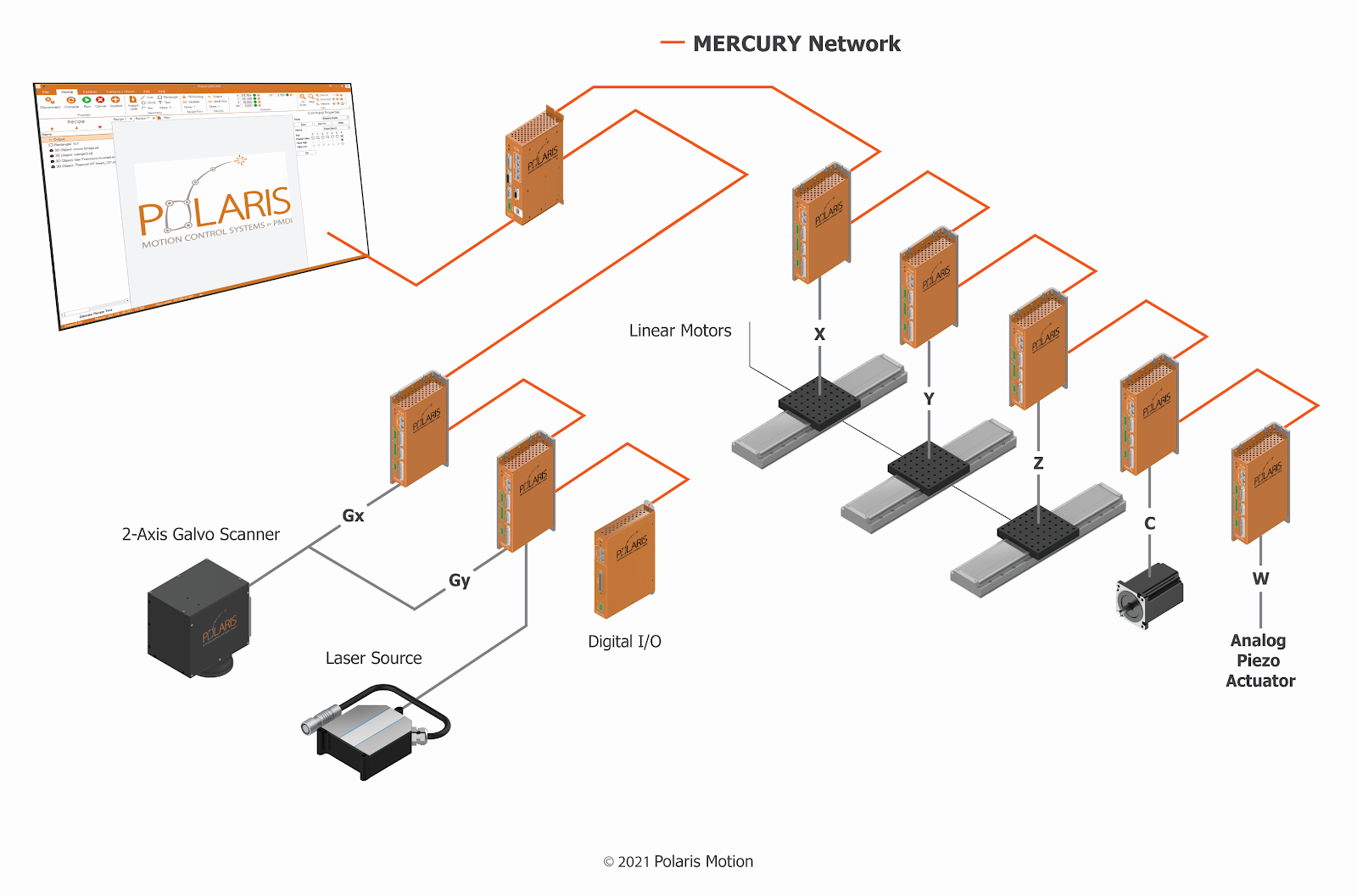
“Our laser workstation controller’s IFOV can be applied to many motion axes,” says Mundt. “The simplest application uses an XY stage, and a 2D Galvo scanner. However, what makes Mundt’s workstation unique is that the IFOV can be used to coordinate a 5-Axis XYZ-AC stage and a 3D Galvo scanner. The motion of a 5-Axis CNC machine or robot is coordinated with a 3D Galvo scanner without effort.”
Mundt points out that it’s Polaris Motion’s controller that provides IFOV, and a variety of other problem-solving tools, features and capabilities, to Mundt’s laser workstations.
“Mundt builds tools that are basically mechanical in nature. We need an efficient, easy-to-use way to control our OEM precision laser tools,” Mundt says. “So, we rely on Polaris to provide the motion control, the smarts to control the equipment and the rest of the toolbox. The more things you have in your toolbox, the more you can do.”
“The Polaris controller has capabilities that are head and shoulders above most of the competition,” says Mundt. And Polaris offers ease of use well. For example, Polaris’s software interfaces nicely with our hardware. It’s very straightforward.”
Mundt says the communications between the controller and drives is elegantly designed, as well.
“The cabling design saves us some time,” says Mundt. “With our previous controller, we would have to take the encoder and everything back to the drive and then from there back to the controller, and so on. With, Polaris the wiring is efficiently designed, saving us time during our manufacturing process.”
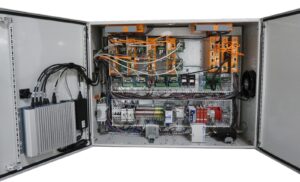
Ease of use is a constant with Polaris, Mundt says. Often controllers can be “horrible” to use, and the operator has to make adjustments every time he or she changes the program, Mundt says.
Mundt says that Polaris “courted” his company for several years, hoping to join forces.
“Polaris kept knocking on our door, but I always told them we were happy with our controller at the time,” says Mundt. “Then, one day, the company that provided our controller was sold. Our relationship changed, and the quality of service went way down. So we decided to work with Polaris.”
Besides a comprehensive set of features that increases productivity and ease of use, Mundt says that Polaris’s responsiveness and devotion to support is also a selling point.
“Often, you might need to use a chat app to contact a solutions provider about a problem, and it can take days to get a response. Polaris is not like that,” says Mundt.
Overall, Polaris’s approach to design, Mundt says, makes integration and assembly easier and quicker, and ultimately more profitable for his company.
And, as the world continues to get smaller, thanks to his company’s collaboration with Polaris, Mundt’s ambitions are only growing bigger.Interested in IFOV, or want to discuss how Polaris can help your business? Don’t hesitate to send us a question!
